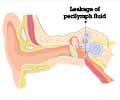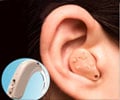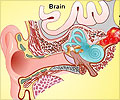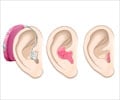A new study has revealed that vibrations in the inner ear continue even after a sound has ended, perhaps serving as a kind of mechanical memory of recent sounds.

The inner ear contains a structure called the cochlea that serves as the organ of hearing. The cochlea is a coiled, fluid filled structure that contains a "basilar" membrane and associated "hair cells".
Essentially, sound-evoked vibrations of the basilar membrane are sensed by the hair cells, which in turn convey auditory information to the nervous system. Some hair cells respond to basilar membrane vibrations by producing forces that increase hearing sensitivity and frequency selectivity through mechanisms that are not completely understood.
"Because hair cell force production is initiated by the acoustic stimulus, it was assumed to end when the stimulus was removed," says senior study author, Dr. Alfred L. Nuttall from the Oregon Hearing Research Center. "However, there is evidence that some tones produce vibrations that continue even after the end of the stimulus."
Using anaesthetized guinea pigs, Dr. Nuttall and colleagues recorded basilar membrane motion and hair cell related potentials in response to various sounds.
They observed that after-vibrations were dependent on the magnitude and frequency of the sound stimuli and that even minor hearing loss elicited a profound reduction in after-vibrations.
Advertisement
"It is important to point out that although our findings clearly document the existence of after-vibrations, further work is needed to elucidate the underlying mechanism."
Advertisement
"The ability to detect brief gaps in an ongoing stimulus is critical for speech recognition; gaps need to be longer than a minimal interval to be perceived," explains Dr. Nutall.
"To the extent that after-vibrations excite the auditory nerve fibers, they may explain part of the difficulty in detecting such gaps."
The study is published by Cell Press in the April 5th issue of Biophysical Journal.
Source-ANI















